Ruth Buchanan Furniture, Plan, Rival Brain
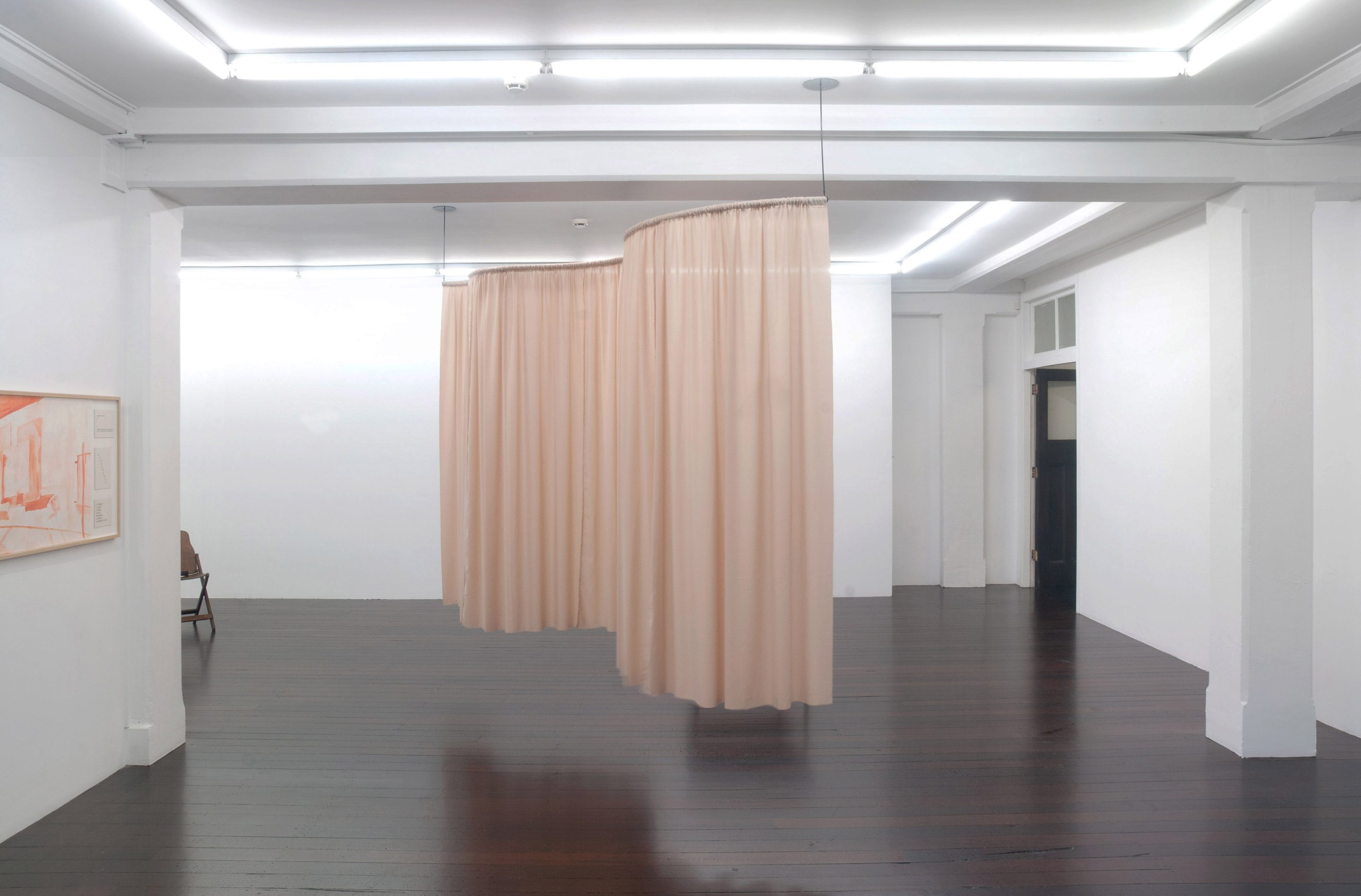
Ruth Buchanan
Furniture, Plan, Rival Brain, 2011
installation view: Hopkinson Cundy, Auckland
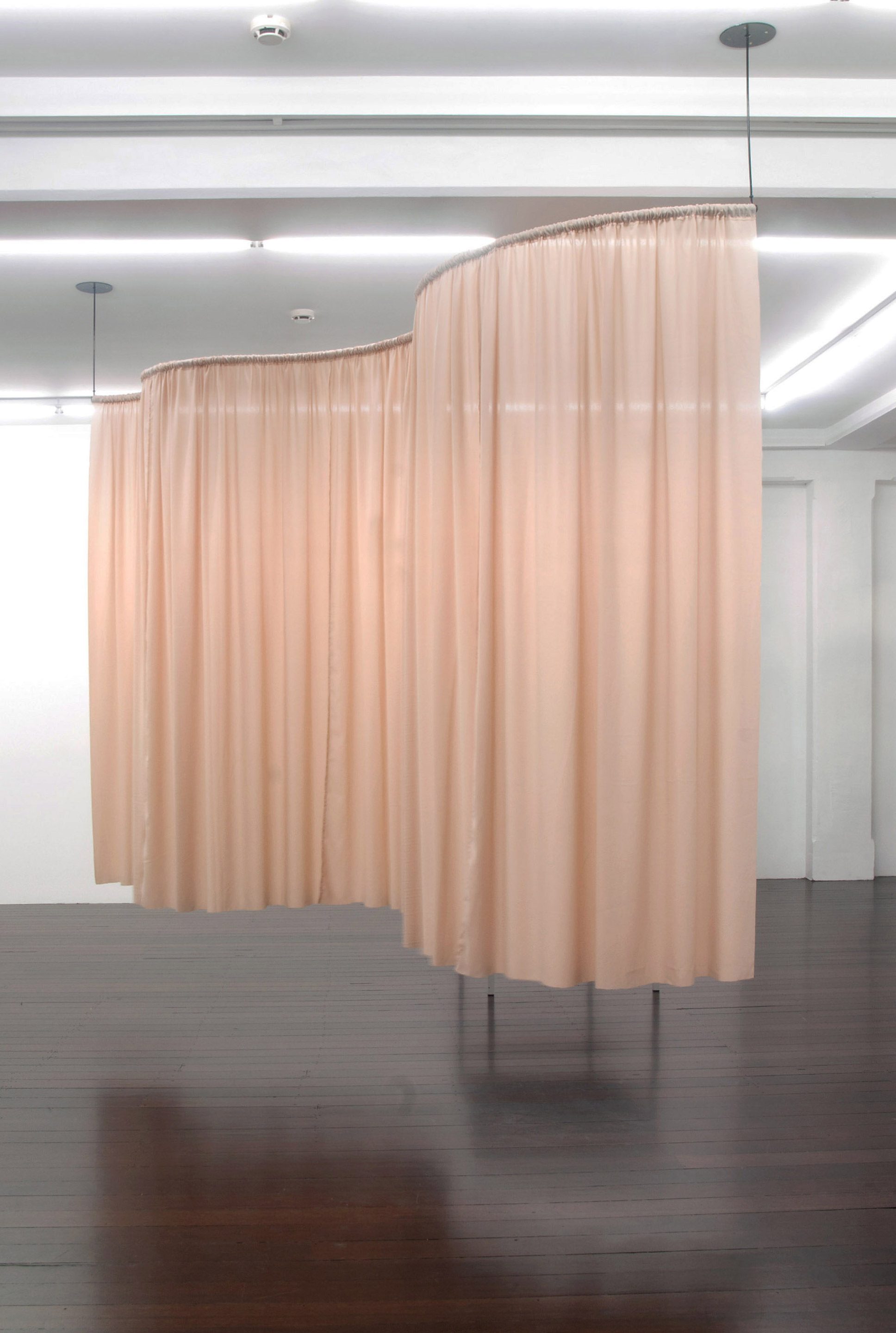
Ruth Buchanan
A Wavy Line, 2011
crepe curtain, powder coated steel frame
2500 x 3200 x 720mm
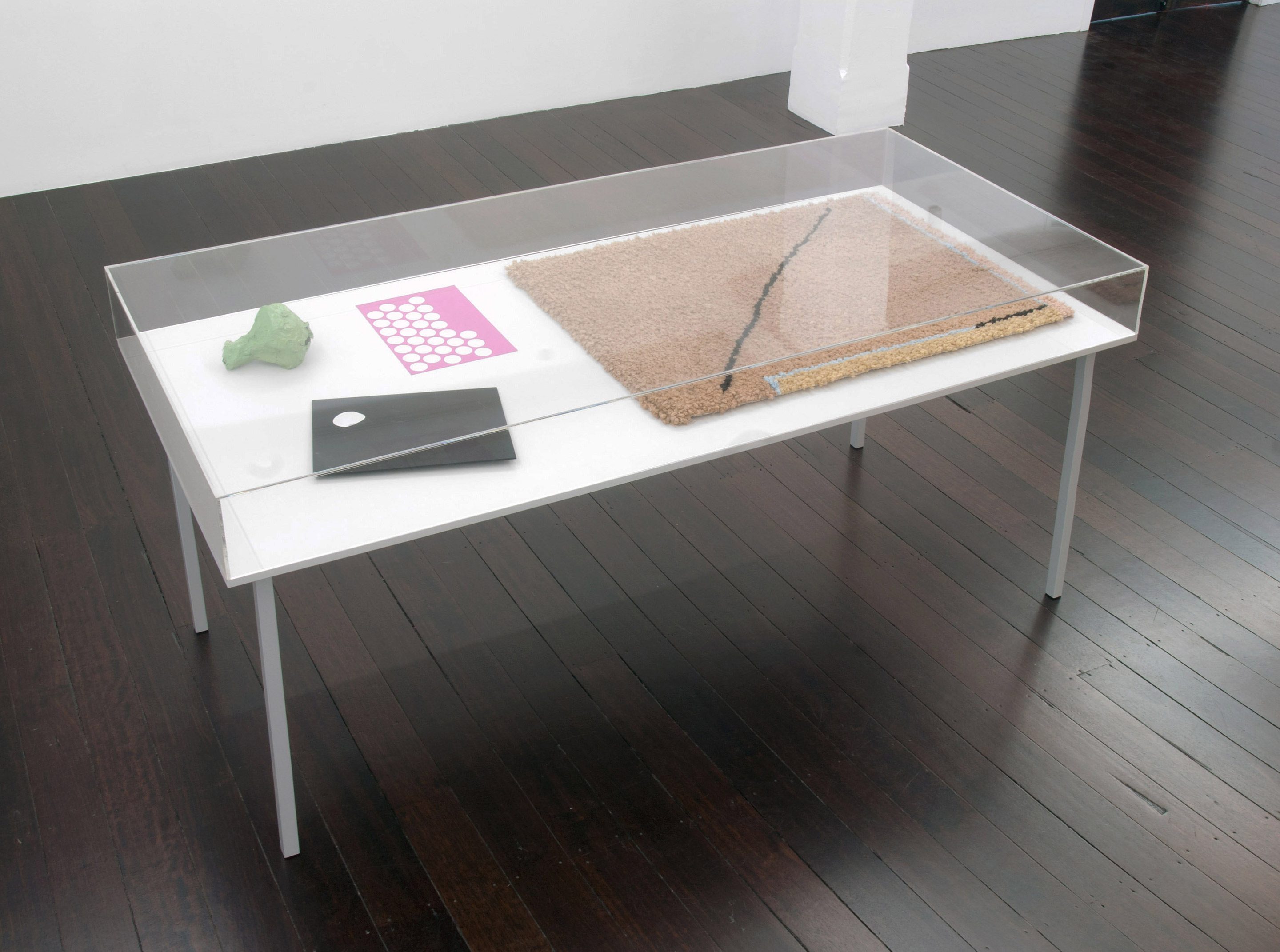
Ruth Buchanan
Furniture, Plan, Rival Brain, 2011
table with customised vitrine cover, hand latch-hooked rug, papier mâché, collage & paper works
800 x 1750 x 750mm
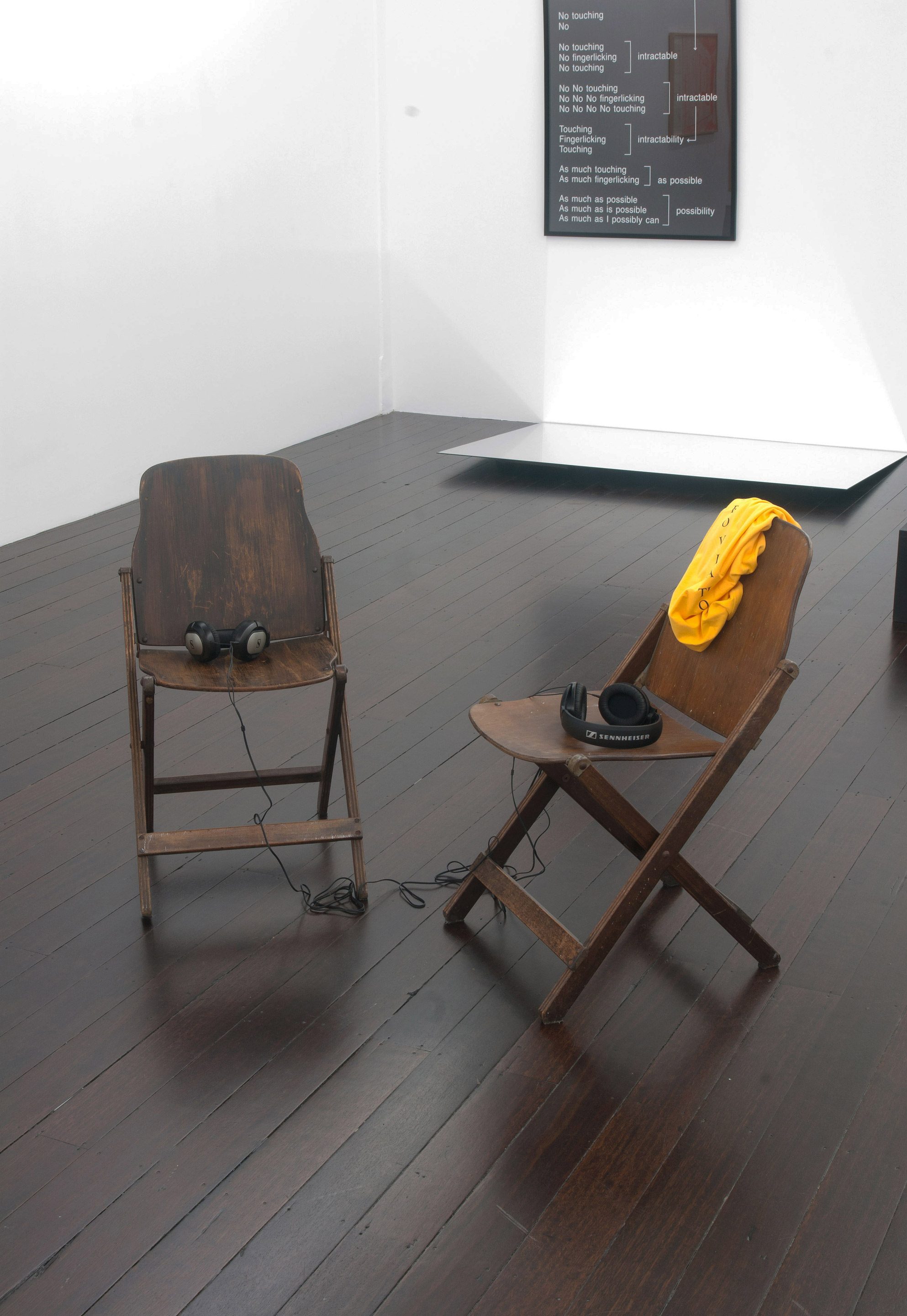
Ruth Buchanan
Sculptor and Improvisation, 2011
audio, printed t-shirt draped over chair
audio duration 14min 31 sec
installation dimensions vary
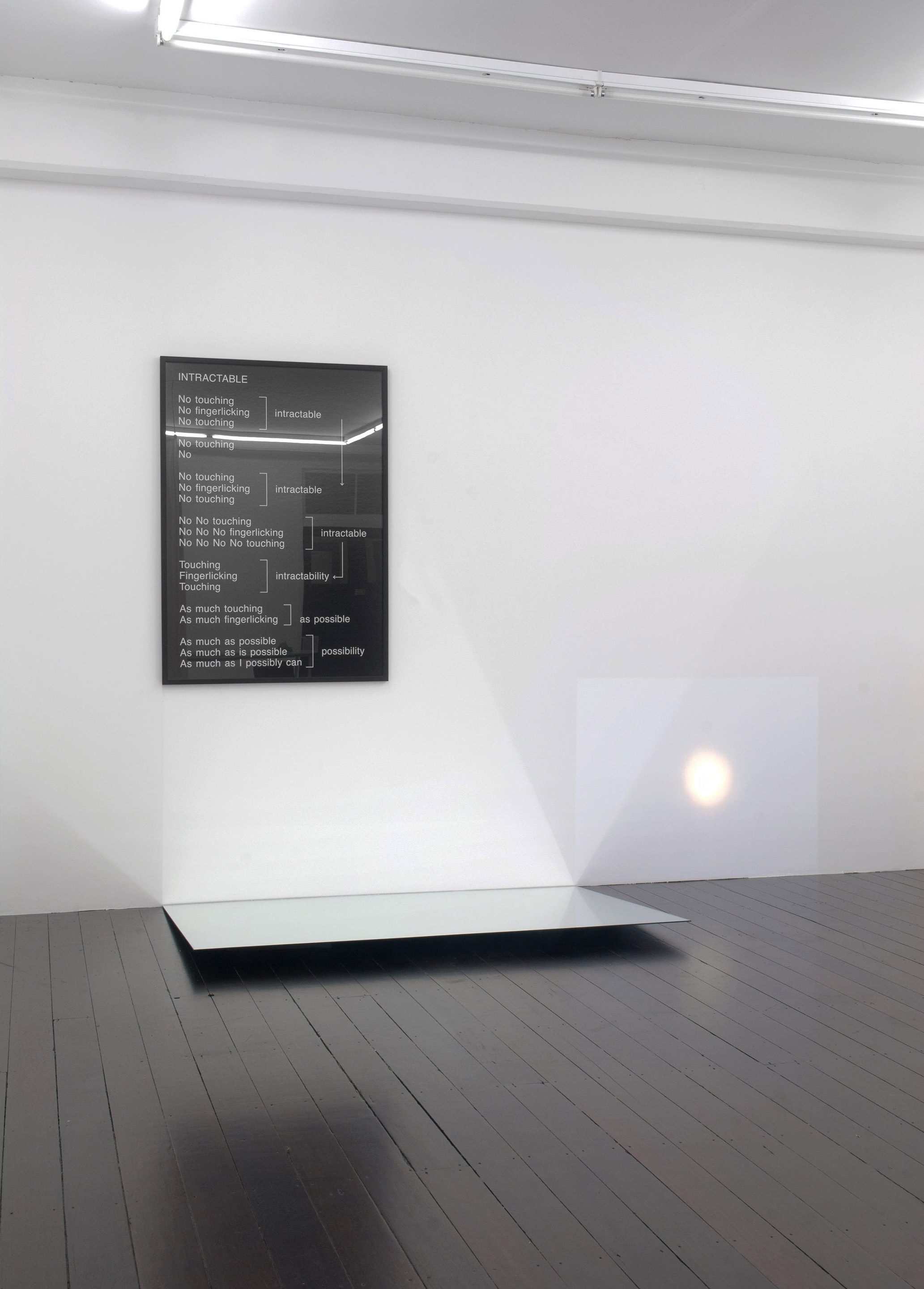
Ruth Buchanan
Furniture, Plan, Rival Brain, 2011
installation view: Hopkinson Cundy, Auckland
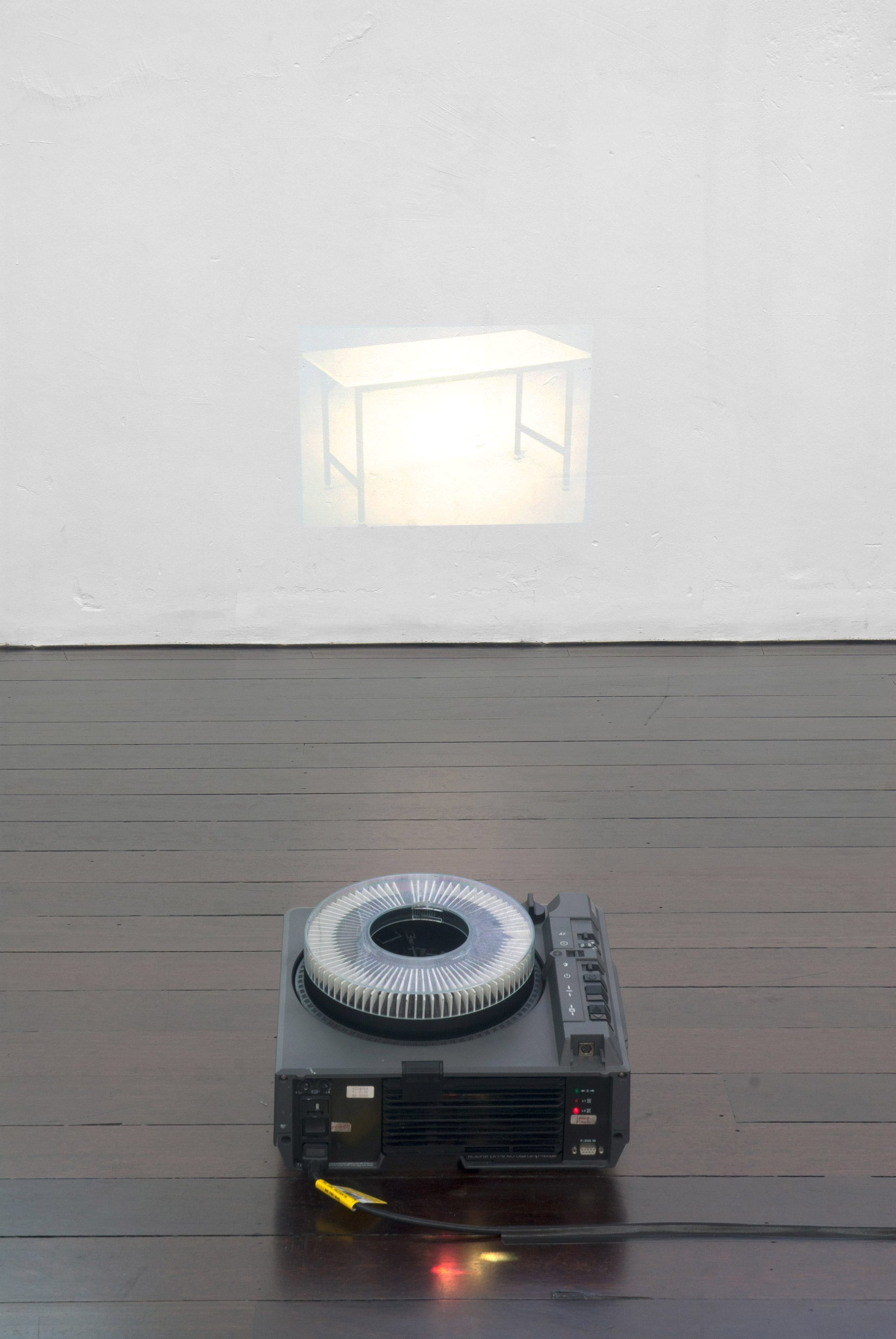
Ruth Buchanan
The way I move tables, 2010
35mm slide projection, duration 24 min
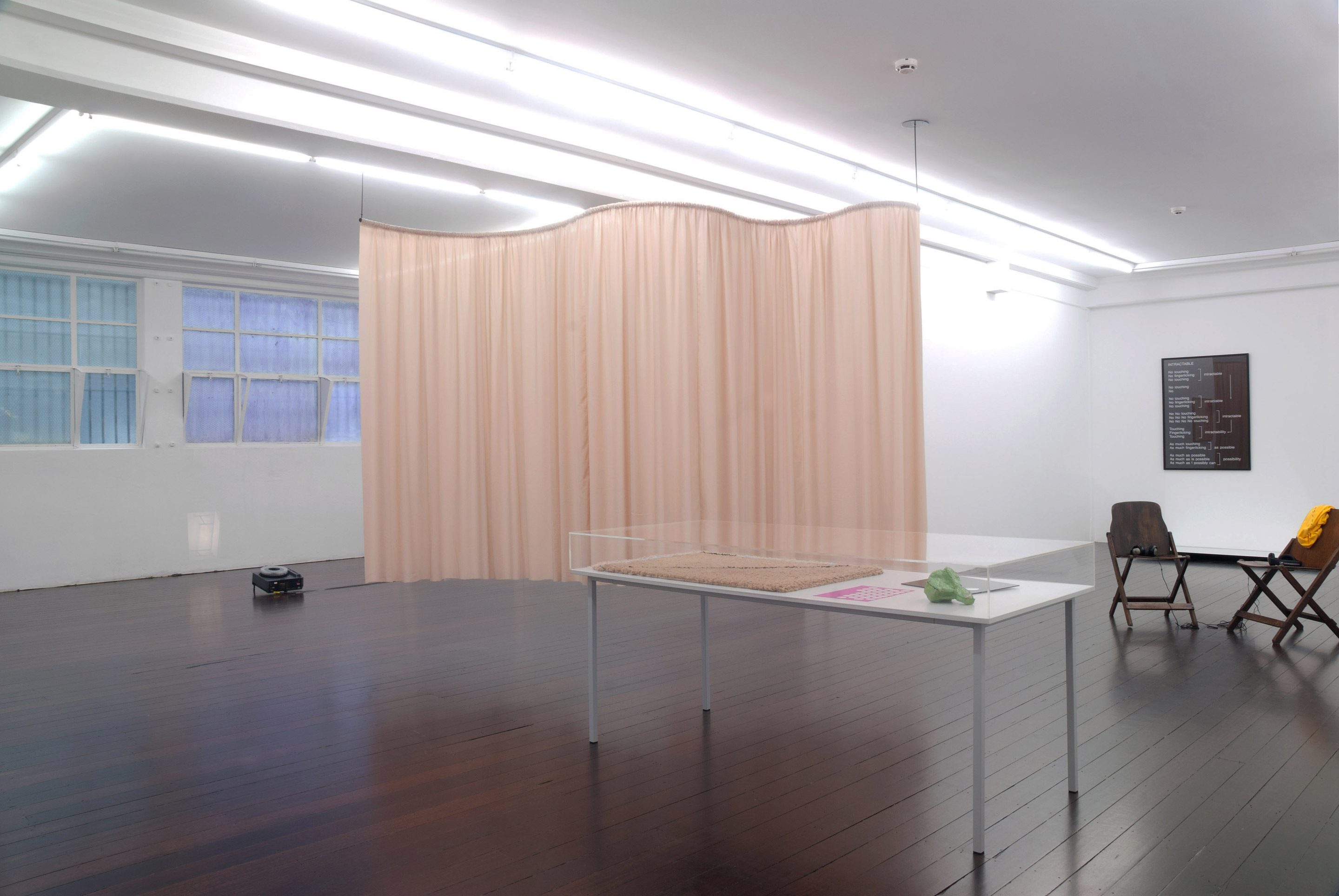
Ruth Buchanan
Furniture, Plan, Rival Brain, 2011
installation view: Hopkinson Cundy, Auckland
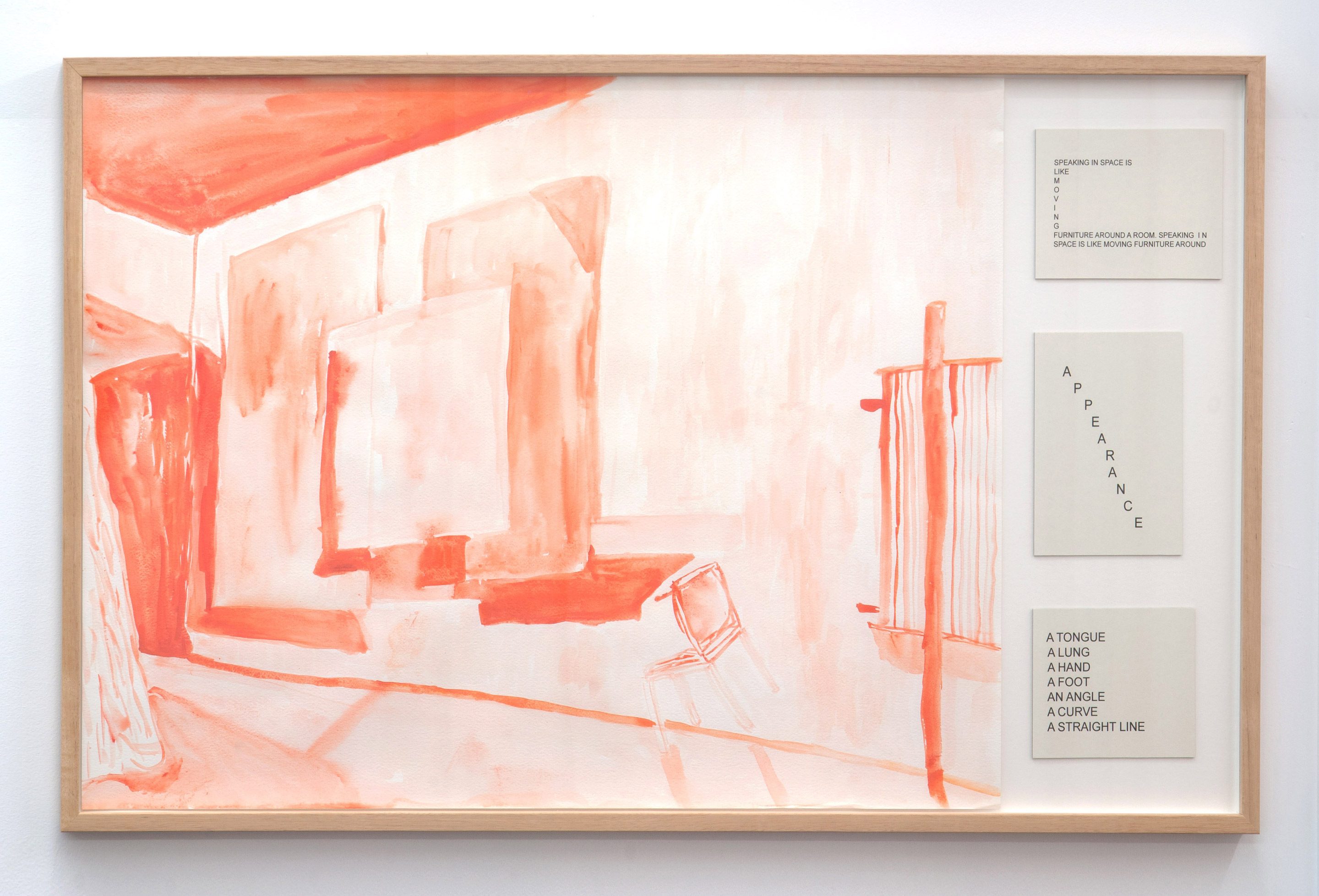
Ruth Buchanan
A Wayward Punctuation (right), 2011
gouache on paper with printed cards
635 x 1040mm
Ruth Buchanan
Furniture, Plan, Rival Brain
09 Nov – 03 Dec 2011
Auckland
“A room, a table, a pile of fruit, a pile of vegetables, a stack of papers, a body, other objects and dim wisps of air coming through the window. It is a ubiquitous metaphor, that of the brain being an interior space, a complicated and mysterious room, a part of architecture – hidden – removed from sight but containing seemingly endless amounts of storage space. Freud said it, Woolf said it, Dickinson said it, Frame said it too. We can see that for many of us the brain does indeed resemble a room, around which we move, navigating, attempting to enter or order or expose, attempting perhaps simply to get to know just a sliver of that space, a small corner, a dusty sill.”
Hopkinson Cundy is pleased to present Furniture, Plan, Rival Brain, a solo exhibition by Ruth Buchanan.
Buchanan works across a range of media including sculpture, video, performance, language, sound, graphics and slide projection. Recently Buchanan’s work has proposed ‘meetings’ between herself and the practices of artistic precursors. These meetings act as departure points and could imply working intensely with, for example, an archival collection, architectural location or production format associated with a particular figure or scenario. Buchanan then employs strategies her predecessors themselves used to navigate the passage from the private space of working to the public space of communication: metaphor, humour, latency, and the fictional.
In Buchanan’s work encounters turn into objects. Archival information, and the experience of its recovery, is translated, tilted or reversed into spatial propositions. A poster with a linguistic diagram stemming from the phrase ‘no fingerlicking’ –borrowed from a sign in the Hocken Library: “Please! Turn paper carefully, no finger licking!”– hangs next to a video projection, created by shining a pair of torches onto the studio wall, inspired by a favourite New Zealand still-life painting. Other objects, such as a papier-maché broccoli and a hand latch-hooked rug, are results of a similarly sustained engagement or transformative ‘getting to know’ process. For Furniture, Plan, Rival Brain, these and other elements are configured in a haptic choreography, a script for which is present in the form of a sound work. Rather than remaining as figments, Buchanan’s borrowed and built metaphors are cast into actual space where the viewer may enter and move amongst them.
Ruth Buchanan (1980, Te Ati Awa/Taranaki) graduated from Auckland’s Elam School of Fine Arts in 2002 and gained her MA (Fine Art) from the Piet Zwart Institute in Rotterdam in 2007. Recent solo exhibitions include: Eigenwillige Zeiechensetzung, Grazer Kunstverein, Graz (2011); Lying Freely, Casco Office for Art, Design and Theory, Utrecht (2010); and Several Attentions – Lying Freely Part III, The Showroom, London (2009). Recent performances include: A Wayward Punctuation, Liste 16, Basel (2011); The weather, a building, Tate Modern, London (2011); and Circular Facts (2009-2010).
Reading the copy:
(Space syntax is a term that is used to describe a family of theories and techniques concerning the relationship between space and society. Initially it was thought that a ‘spatial configuration’ could be read as an artifact of the society that constructed it; that by studying such a system of spaces it would be possible to more fully understand the society itself (as would be true of studying any other kind of artifact). This is now seen as too simplistic. However relationships between space and society can be mapped: not only does a society create the spatial systems that it uses, but a group of people is directly affected and influenced by the spaces they inhabit. Any set of spaces, of the sufficient complexity to be described as a configuration, forms spatial narratives. One of the key methods of analysis used in space syntax research is a graph-based technique that is able to identify and represent these patterns. For example powerful relationships can be found between movement and spatial structures. Here in lies the linguistic analogy. Although it is possible to randomly generate grammatically correct sentences, only a small number of these would make any sense. The conclusion is that configurations of spaces not only have a grammar, but also ‘syntax’: the pattern of relationships between spaces. It is this pattern of spatial relations that permit configurations to be meaningful and it is hypothesized that people have an innate ability to ‘read’ or comprehend these meanings. It is this aspect of attempting to understand how the meaning of spatial environments are communicated that connects space syntax to other forms of cognition.)
I am reading a photographic document of a past exhibition. I am writing from the copy. The image presents the green curtain dividing the room. It forms a line within the exhibition that proposes a syntax of space as a relationship between double parentheses or two parallel lines; wall-curtain, curtain-wall. I am on this side of the line and you the other. You are in the installation reading this (or rather I presume you to be) and I am writing about it at a remove (and believe myself to be at a distance). I gather that from where ever we are we have now met in someway by becoming part of the community of relations within the scripted space of the artist. We have become her public.
This contingent installation has been built in response to the artifacts of the artist’s literary predecessors: words, forms and rooms that have touched her. This configuration invites you and I to similarly overcome the space between observation and action, and move between the lines. To occupy this temporal state is to register the transformation of meaning as certain, say to any given situation and its associated patterns, or further to understand that a society evolves despite the commitment to belong. We are as time provisional as the woven carpet modelled from a page in a book that documents a previous iteration of this exhibition; an adaptation evident of its making.
(A society is defined as a group of people related to each other through persistent relations. It can be a large social grouping sharing the same geographical or virtual territory, or subject to the same political authority and dominant cultural expectations. Human societies are characterised by patterns of relationships between individuals. Insofar as it is collaborative, a society can enable its members to benefit in ways that would not otherwise be possible on an individual basis; both individual and common benefits can thus be distinguished, or in many cases found to overlap. There are shared values that link groups of people, and situations are consciously produced for these relationships to be sustained. The spaces in which a society gathers are reflexively choreographed often acknowledging that lived relations are uncontainable. Choreography envisages alternative forms and expressions of understanding, registered collectively. It operates across media and language boundaries. Although it is commonly recognised as an embodied experience, to choreograph also encompasses linguistic expressions for action, thought, reflection, and writing. All persistent acts that contribute to the development of society and our expanded awareness of society as a state in motion.)
Laura Preston, November 2011
1. Parts taken from Ruth Conroy Dalton and Christoph Hölscher, Understanding Space: the nascent synthesis of cognition and the syntax of spatial morphologies. Workshop Bremen, 2006.
2. From re-reading Ruth Buchanan’s Lying Freely, 2011.
3. Modelled on Wikipedia and information gleaned from our Google informed society, 2011.